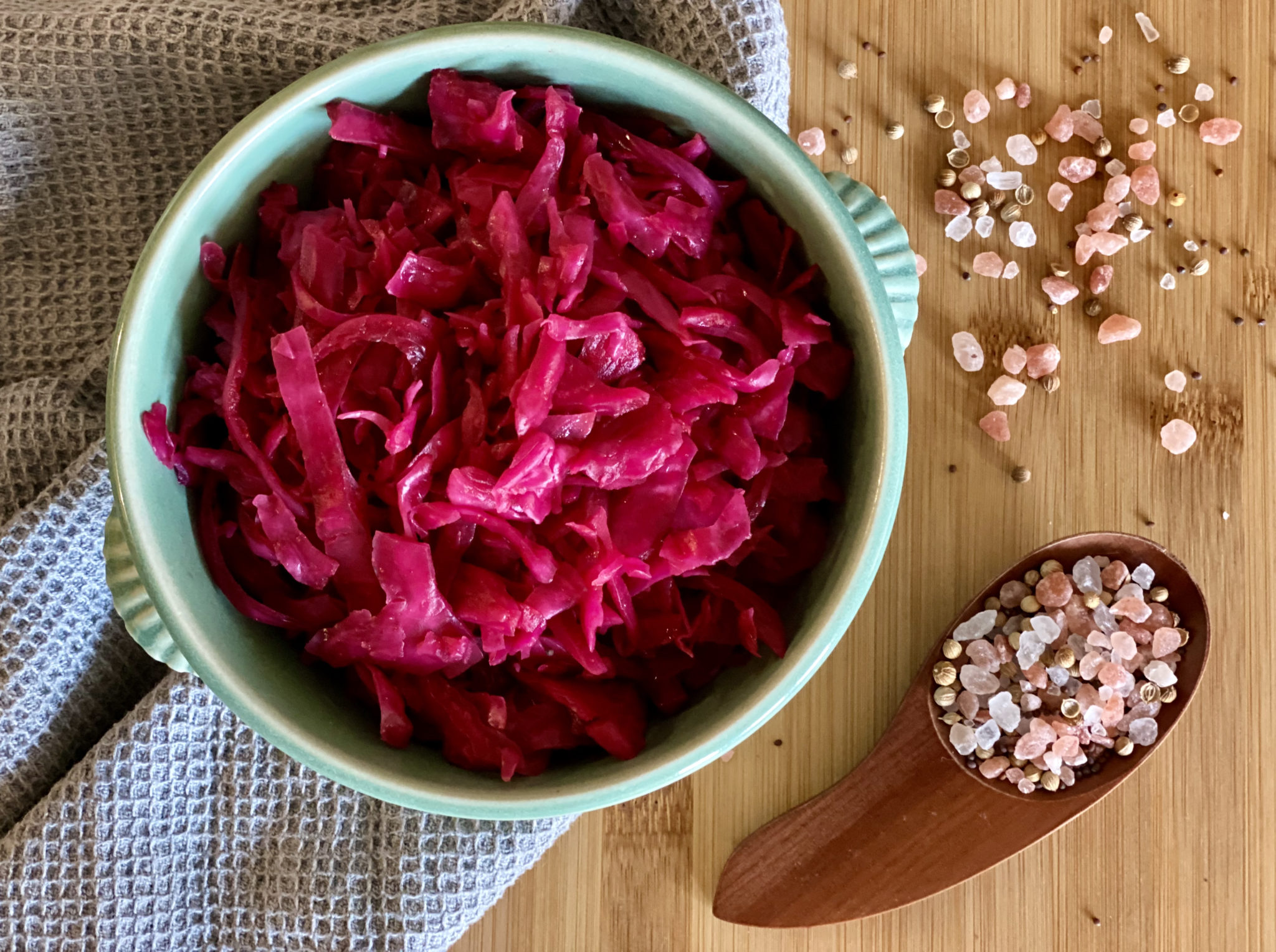
Bare Naked Kraut
Whether you’re pickling newb or a seasoned fermentista, sauerkraut is one of the easiest cult classics to make. In fact, this recipe has just two ingredients. Yep, two. Salt, cabbage, and a teensy bit of time are all you need to get started.
Better still, sauerkraut extremely easy to jazz up. For a classic German ‘kraut, simply add caraway seeds. For a sultry alternative, try my Curry Raisin Kraut. Raid your spice cupboard or go wild with flavoured salts (smoked salt is fantastic!) – just avoid those with artificial flavours or additives.
Any kind of cabbage can be used to make sauerkraut – red, napa, green, wombok, or more. I often use red – though confusingly named – for its pretty purple hues and antioxidant levels, but any kind will do.
Besides spices, you can experiment with a variety of veggies too. Try shredded carrots, beets, onion, radishes, or more – just opt for firmer textured veggies, as softer ones like broccoli or sprouts will become mushy. Now, let’s strip to the basics and get to this naked ‘kraut.
Bare Naked Kraut

Ingredients
- 1kg (~1 small head) cabbage
- 3 tsp non-iodized salt
Instructions
- Wash the cabbage and remove the thick outer leaves. Set aside a couple of unblemished ones for later.
- With a sharp knife, cut the cabbage into quarters keeping the core. Shred everything (including the core) with a knife, grater, or mandolin. Put the shreds into a large bowl.
- Sprinkle the 3 teaspoons of non-iodized salt over the cabbage shreds.
- Break down the cabbage leaves by repeatedly squeezing the cabbage in your hands for several minutes, or by smashing with a mortar, rolling pin, or pounding device. Do this until the cabbage is dripping with juices when you squeeze a fistful in your hands. It may take a few minutes.
- Add the contents to a 1L jar. As you add each handful, press down firmly to reduce air bubbles and push the brine upwards. Leave at least 1 inch of headspace.
- Take one of the reserved outer cabbage leaves (or a piece of baking paper) and cut it into a circle the diameter of your jar. Place this atop the mixture.
- Optional step: place a ferment weight (or DIY one like a sandwich bag filled with water or a clean rock) on top of the cabbage leaves. This helps keep everything submerged.
- Screw the lid on and store the jar on a plate somewhere out of direct sunlight.
- “Burp” the jar daily by unscrewing and re-screwing the lid quickly (no need to remove it entirely). If there is little or no pressure, you can burp less frequently.
- After 5 days, taste the sauerkraut using a clean fork. This is the soonest it will be done, though the flavour will develop more over time (1 week is ideal, you can leave it much longer). The kraut should be tangy when complete. In warmer temperatures it will ferment faster, when it’s cooler it will finish slower.
- Once done to your liking, move the sauerkraut to the fridge where it will keep for ~6 months.
Hot Tips
- Use as fresh a cabbage as you can; it will be juicier and thus help produce more brine.
- Use organic when you can (pesticides can kill the beneficial microbes on the cabbage leaves). Don’t fret if this is out of your budget or unavailable though, ‘kraut can still be made non-organic.
- Always ensure that cabbage shreds are submerged below the brine. Do this by pressing the mixture down firmly and placing a clean weight on top of it.
- For a firmer textured ‘kraut, cut the cabbage into thicker strips. For a softer texture, shred the leaves thinner (which can be good to blend into dips or use as a sandwich topping).

